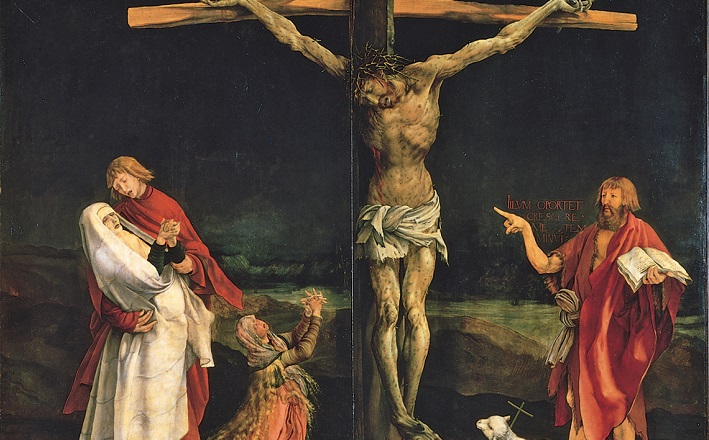Dear Working Preacher,
A belated and blessed New Year and Epiphany to you. And thank you for doing all that you do to preach the good news in a world that more and more rallies around bad news. Many Working Preachers are exhausted during this season. Exhausted by polarization, by COVID anxiety and stress, by life. In the midst of all this exhaustion, thank you for preaching the good news.
Here he is!
The first scene in this week’s Gospel lesson from John is as apt a picture of what it means to preach the good news. Here we have it all.
John the Baptizer is the preacher. In the previous verses, John has made one thing clear: This is not about me!
- I am not the Messiah.
- I am not Elijah.
- I am not the prophet (an expected eschatological figure).
- “Who are you then?” the people ask.
- I am the preacher who is to prepare the way, says John. I baptize with water, but one is coming after me whose shoes I am not even worthy to untie.
The next day (where this week’s text starts), John says:
- Here he is! The lamb who takes away the sin of the world!
- The Spirit is upon him, he is the Son of God. (A nice trinitarian affirmation.)
Here is the first thing about the good news and the preacher of good news. We get to tell the delivering good news: “It is not about me!”
Who does that good news deliver? Well, first of all, it delivers us, working preacher. There is a God! This God comes to us in Jesus! And, praise and thanks to God, you and I are delivered from the impossible expectation that ministry is about us. It is so not about us. The first person to be delivered by your proclamation of the good news is you! (And the first person to be delivered by my proclamation is me!) You are not God. I am not God. There is another to whom we merely point.
Jesus, the Lamb the Son of God!
But if that were it, we would still be most to be pitied. But it isn’t. Because the good news continues:
- The lamb who takes away the sin of the world!
Because the good news is not simply that you and I are not God. It is far better than that. The good news is that Jesus is the Son of God, upon whom the Spirit rests, the lamb who takes away the sin of the world.
And there it is. The good news in all its fullness. What God has done in Jesus Christ is take away the sin of the entire world. Not just a community, not just a generation, not just a people. The world!
The scene interpreted visually: The Isenheim Altarpiece
The Working Preacher’s job is simply to point—over and over and over again—to Jesus.
The most famous—because it is the most poignant—visual interpretation of the scene is the Isenheim Altarpiece, painted by Matthias Grünewald. This week, I am only interested in the figure of John the Baptist and Christ.
In the center of the painting is the crucified Christ. In the scene, Christ not only suffers on the cross, his body is also pitted with the sores of the black plague, which was winnowing the population of Europe at the time of the painting (and to which those who suffered from the plague were sent).
On the right is John the Baptist—who is recognizable according to the “visual vocabulary” crafted for the mostly illiterate population—at John’s feet there is a lamb, he holds Scripture (presumably the Isaiah passage quoted in this week’s text), and he points to Jesus.
In the background is written in Latin, “He must increase, I must decrease.” These are words that John the Baptizer speaks in John 3:30. And behold, a close examination of the painting reveals that the figure of Jesus is larger than John—Jesus has increased, John has decreased.
The whole scene is filled with anachronisms and artistic license, of course. John the Baptizer was murdered by Herod long before the crucifixion and he did not travel with either a lamb or Bible. Nor is he ever described as smaller than Jesus. And, of course, the plagued sores on Jesus’ body are completely anachronistic. But altogether, the scene is an artistic triumph of theological interpretation. Jesus has increased and taken on the sin of the world.
We must decrease, Jesus must increase!
So back to you and me, Working Preacher. We must decrease and he must increase. In this world of exhaustion for preachers, part of the redemptive word for preachers is not to try to be greater, to be stronger, to be healthier, or to seek balance. The redemptive task is to point over and over and over again to Jesus—in order that he might increase and we might decrease. In fact, Jesus must increase and we must decrease.
Our wills, our ideologies, our purposes, our callings. All must decrease. And in that decrease, Christ will give us rest.
Thanks for what you do, Working Preacher.
In Christ,
Rolf Jacobson

